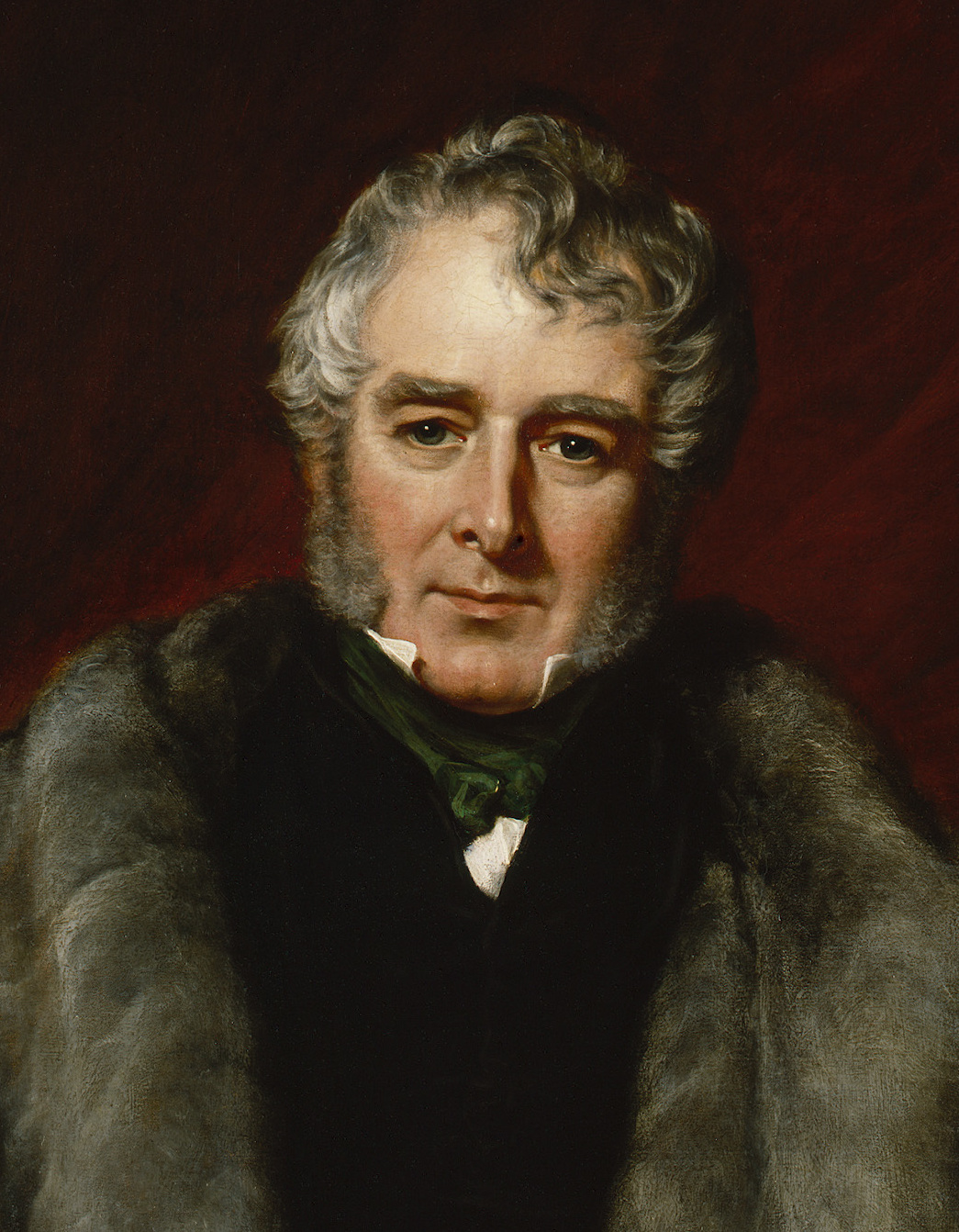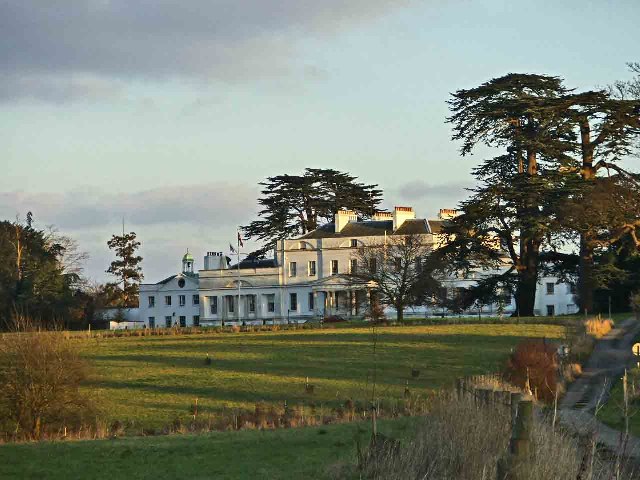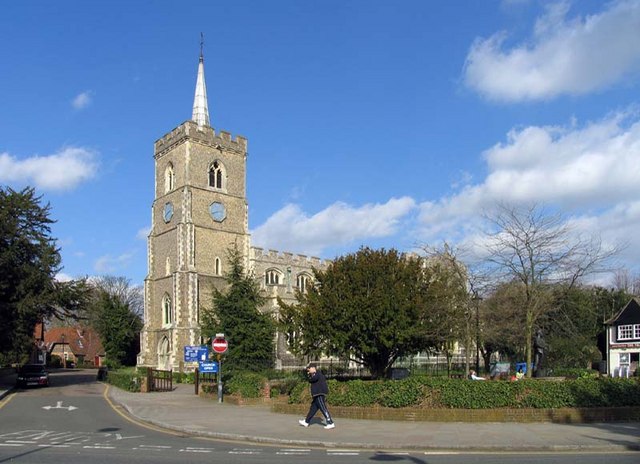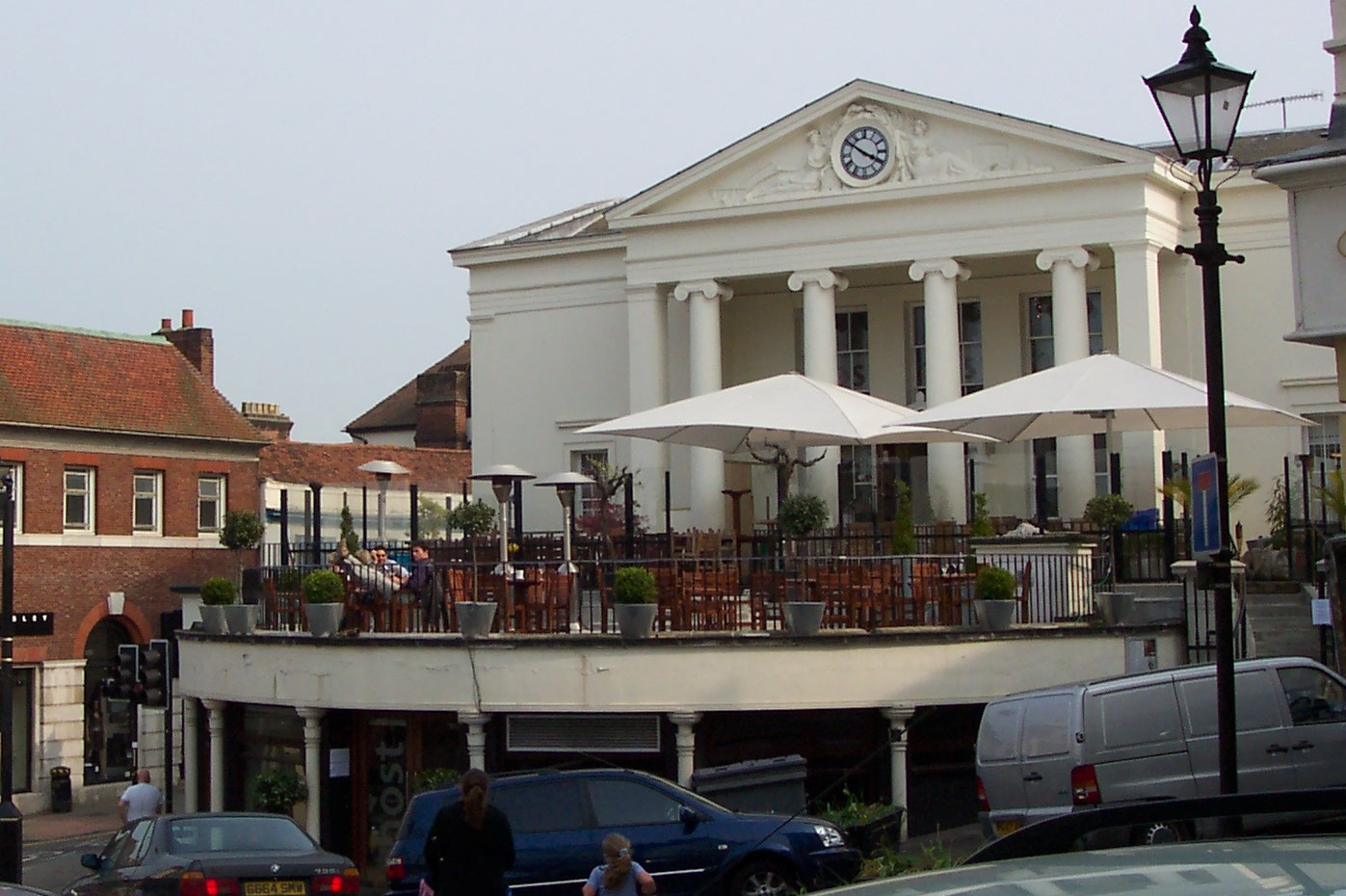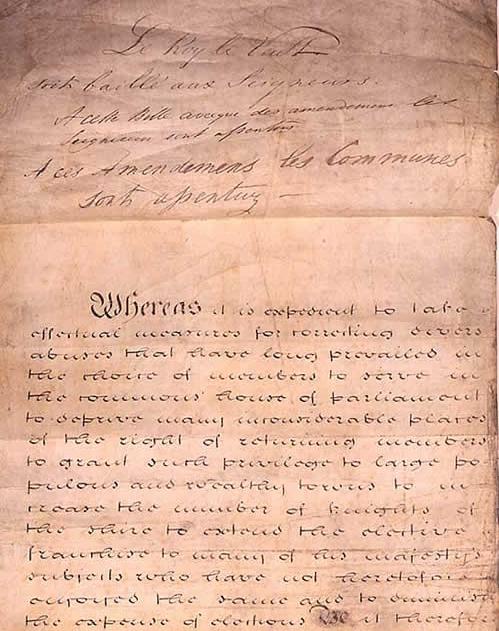|
Hertfordshire (UK Parliament Constituency)
Hertfordshire was a county constituency covering the county of Hertfordshire in England. It returned two Knights of the Shire to the House of Commons of England until 1707, then to the House of Commons of Great Britain until 1800, and to the House of Commons of the Parliament of the United Kingdom from 1800 until 1832. The Reform Act 1832 gave the county a third seat with effect from the 1832 general election. Elections were held using the bloc vote system, when contested. However, even after the 1832 reforms, contested elections were the exception: of the 17 elections from 1832 to 1880, 9 were uncontested, including the 1880 general election. In such cases all the nominated candidates were returned without a vote. History The constituency consisted of the historic county of Hertfordshire. (Although Hertfordshire contained two boroughs, Hertford and St Albans, each of which elected two MPs in its own right, these were not excluded from the county constituency, and owning pro ... [...More Info...] [...Related Items...] OR: [Wikipedia] [Google] [Baidu] |
Hertford (UK Parliament Constituency)
Hertford was the name of a parliamentary constituency in Hertfordshire, which elected Member of Parliament (United Kingdom), Members of Parliament (MPs) from 1298 until 1974. History The Parliamentary Borough of Hertford was represented by two MPs in the House of Commons of England from 1298 to 1707, then of the House of Commons of Great Britain from 1707 to 1800, and finally in the House of Commons of the United Kingdom, House of Commons of the Parliament of the United Kingdom from 1801 onwards. Under the Boundaries Act of 1868, its representation was reduced to 1 MP. The Redistribution of Seats Act 1885 (which followed on from the Representation of the People Act 1884, Third Reform Act) abolished the Parliamentary Borough and it gave its name to one of four Divisions of the abolished three-member Parliamentary County of Hertfordshire (UK Parliament constituency), Hertfordshire, and was formally named as the Eastern or Hertford Division of Hertfordshire. As well from the B ... [...More Info...] [...Related Items...] OR: [Wikipedia] [Google] [Baidu] |
Freehold (English Law)
In common law jurisdictions such as England and Wales, Australia, Canada, and Ireland, a freehold is the common mode of ownership of real property, or land, and all immovable structures attached to such land. It is in contrast to a leasehold, in which the property reverts to the owner of the land after the lease period expires or otherwise lawfully terminates. For an estate to be a freehold, it must possess two qualities: immobility (property must be land or some interest issuing out of or annexed to land) and ownership of it must be forever ("of an indeterminate duration"). If the time of ownership can be fixed and determined, it cannot be a freehold. It is "An estate in land held in fee simple, fee tail or for term of life." The default position subset is the perpetual freehold, which is "an estate given to a grantee for life, and then successively to the grantee's heirs for life." England and Wales Diversity of freeholds before 1925 In England and Wales, before the Law of Prope ... [...More Info...] [...Related Items...] OR: [Wikipedia] [Google] [Baidu] |
Thomas Brand, 20th Baron Dacre
Thomas Brand, 20th Baron Dacre (25 March 1774 – 21 March 1851) was a British peer and Whig politician. Background Dacre was the eldest son of Thomas Brand, of The Hoo, Hertfordshire, and Gertrude, 19th Baroness Dacre, daughter of the Hon. Charles Roper. Military career He raised and commanded the Kimpton Volunteer Rifles, a part-time unit of the Volunteer Corps formed in 1803. In 1808 the volunteers were replaced by the Local Militia, and Brand commanded the Midland Battalion, Hertfordshire Local Militia, based at Hitchin. Political career Dacre entered Parliament for Helston in January 1807, a seat he only held until May of the same year, when he was returned for Hertfordshire. He continued to represent this constituency until 1819, when he succeeded his mother in the barony of Dacre and entered the House of Lords. Personal life Lord Dacre married Barbarina, daughter of Admiral Sir Chaloner Ogle, 1st Baronet and widow of Valentine Wilmot, in 1819. The marriage was child ... [...More Info...] [...Related Items...] OR: [Wikipedia] [Google] [Baidu] |
William Baker (1743–1824)
William Baker (3 October 1743 – 20 January 1824) was a British politician. Life William Baker was the eldest son of Sir William Baker, MP, educated at Eton College (1753–60). Admitted to Clare College, Cambridge in 1761, he did not matriculate there. He studied law at the Inner Temple (1761), where he was called to the bar in 1775. He succeeded his father in 1770, inheriting and renovating the Bayfordbury country house in Hertfordshire. He was elected a Sheriff of London for the same year. Baker was the Member of Parliament for Aldborough 4 March 1777 – 8 September 1780, Hertford 7 September 1780 – 30 March 1784, Hertfordshire 23 June 1790 – 10 July 1802 and 11 February 1805 – 11 May 1807 and Plympton Erle 22 March 1768 – 10 October 1774. He died at the age of 80. He had married twice: firstly with Juliana, the daughter of Thomas Penn of Stoke Park, Buckinghamshire and the granddaughter of William Penn, Governor of Pennsylvania, with whom he had a daughter; and ... [...More Info...] [...Related Items...] OR: [Wikipedia] [Google] [Baidu] |
References
Reference is a relationship between objects in which one object designates, or acts as a means by which to connect to or link to, another object. The first object in this relation is said to ''refer to'' the second object. It is called a ''name'' for the second object. The second object, the one to which the first object refers, is called the '' referent'' of the first object. A name is usually a phrase or expression, or some other symbolic representation. Its referent may be anything – a material object, a person, an event, an activity, or an abstract concept. References can take on many forms, including: a thought, a sensory perception that is audible (onomatopoeia), visual (text), olfactory, or tactile, emotional state, relationship with other, spacetime coordinate, symbolic or alpha-numeric, a physical object or an energy projection. In some cases, methods are used that intentionally hide the reference from some observers, as in cryptography. References feature in many sp ... [...More Info...] [...Related Items...] OR: [Wikipedia] [Google] [Baidu] |
Hitchin
Hitchin () is a market town and unparished area in the North Hertfordshire Districts of England, district in Hertfordshire, England, with an estimated population of 35,842. History Hitchin is first noted as the central place of the Hicce people, a tribe holding 300 Hide (unit), hides of land as mentioned in a 7th-century document,Gover, J E B, Mawer, A and Stenton, F M 1938 ''The Place-Names of Hertfordshire'' English Place-Names Society volume XV, 8 the Tribal Hidage. Hicce, or Hicca, may mean ''the people of the horse.'' The tribal name is Old English and derives from the Middle Angles, Middle Anglian people. It has been suggested that Hitchin was the location of 'Councils of Clovesho, Clofeshoh', the place chosen in 673 by Theodore of Tarsus the Archbishop of Canterbury during the Synod of Hertford, the first meeting of representatives of the fledgling Christianity, Christian churches of Anglo-Saxon England, to hold annual synods of the churches as Theodore attempted to conso ... [...More Info...] [...Related Items...] OR: [Wikipedia] [Google] [Baidu] |
Ware, Hertfordshire
Ware is a town in Hertfordshire, England close to the county town of Hertford. It is also a civil parishes in England, civil parish in East Hertfordshire district. Location The town lies on the north–south A10 road (Great Britain), A10 road which is partly shared with the east–west A414 road, A414 (for Hertford to the west and Harlow to the east). There is a large Kingsmead Viaduct, viaduct over the River Lee (England), River Lea at Kings Meads. The £3.6m two-mile bypass opened on 17 January 1979. At the north end of the bypass is the Wodson Park Sports and Leisure Centre and Hanbury Manor, a hotel and country club. The former route of the A10 through the town is now the A1170. The Ware railway station, railway station is on the Hertford East Branch Line and operated by Greater Anglia (train operating company), Greater Anglia and is on a short single track section of the otherwise double track line. History Archaeology has shown that Ware has been occupied since at least t ... [...More Info...] [...Related Items...] OR: [Wikipedia] [Google] [Baidu] |
Bishops Stortford
Bishop's Stortford is a historic market town in Hertfordshire, England, just west of the M11 motorway on the county boundary with Essex, north-east of central London, and by rail from Liverpool Street station. Stortford had an estimated population of 41,088 in 2020. The district of East Hertfordshire, where the town is located, has been ranked as the best place to live in the United Kingdom, UK by the Halifax Quality of Life annual survey in 2020. The town is commonly known as “Stortford” by locals. History Etymology The origins of the town's name are uncertain. One possibility is that the Saxons, Saxon settlement derives its name from 'Steorta's ford' or 'tail ford', in the sense of a 'tail', or tongue, of land. The town became known as Bishop's Stortford due to the acquisition in 1060 by the Bishop of London. The River Stort is named after the town, and not the town after the river. When cartographers visited the town in the 16th century, they reasoned that the tow ... [...More Info...] [...Related Items...] OR: [Wikipedia] [Google] [Baidu] |
St Albans
St Albans () is a cathedral city in Hertfordshire, England, east of Hemel Hempstead and west of Hatfield, Hertfordshire, Hatfield, north-west of London, south-west of Welwyn Garden City and south-east of Luton. St Albans was the first major town on the old Roman Britain, Roman road of Watling Street for travellers heading north and became the city of Verulamium. It is within the London commuter belt and the Greater London Built-up Area. Name St Albans takes its name from the first British saint, Saint Alban, Alban. The most elaborate version of his story, Bede's ''Ecclesiastical History of the English People'', relates that he lived in Verulamium, sometime during the 3rd or 4th century, when Christians were suffering persecution. Alban met a Christian priest fleeing from his persecutors and sheltered him in his house, where he became so impressed with the priest's piety that he converted to Christianity. When the authorities searched Alban's house, he put on the priest's cloa ... [...More Info...] [...Related Items...] OR: [Wikipedia] [Google] [Baidu] |
Great Reform Act
The Representation of the People Act 1832 (also known as the 1832 Reform Act, Great Reform Act or First Reform Act) was an Act of Parliament of the United Kingdom (indexed as 2 & 3 Will. IV c. 45) that introduced major changes to the electoral system of England and Wales. It abolished tiny districts, gave representation to cities, gave the vote to small landowners, tenant farmers, shopkeepers, householders who paid a yearly rental of £10 or more, and some lodgers. Only qualifying men were able to vote; the Act introduced the first explicit statutory bar to women voting by defining a voter as a male person. It was designed to correct abuses – to "take effectual Measures for correcting divers Abuses that have long prevailed in the Choice of Members to serve in the Commons House of Parliament". Before the reform, most members nominally represented boroughs. The number of electors in a borough varied widely, from a dozen or so up to 12,000. Frequently the selection of Memb ... [...More Info...] [...Related Items...] OR: [Wikipedia] [Google] [Baidu] |
Oliver Cromwell
Oliver Cromwell (25 April 15993 September 1658) was an English politician and military officer who is widely regarded as one of the most important statesmen in English history. He came to prominence during the 1639 to 1651 Wars of the Three Kingdoms, first as a senior commander in the Parliamentarian army and then as a politician. A leading advocate of the execution of Charles I in January 1649, which led to the establishment of the Republican Commonwealth of England, Scotland and Ireland, he ruled as Lord Protector from December 1653 until his death in September 1658. Cromwell nevertheless remains a deeply controversial figure in both Britain and Ireland, due to his use of the military to first acquire, then retain political power, and the brutality of his 1649 Irish campaign. Educated at Sidney Sussex College, Cambridge, Cromwell was elected MP for Huntingdon in 1628, but the first 40 years of his life were undistinguished and at one point he contemplated emigration to ... [...More Info...] [...Related Items...] OR: [Wikipedia] [Google] [Baidu] |
Second Protectorate Parliament
The Second Protectorate Parliament in England sat for two sessions from 17 September 1656 until 4 February 1658, with Thomas Widdrington as the Speaker of the House of Commons. In its first session, the House of Commons was its only chamber; in the second session an Other House with a power of veto over the decisions of the Commons was added. Background There were two sessions the first from 17 September 1656 until 26 June 1657 and a second from 20 January until 4 February 1658. The Second Protectorate Parliament was summoned reluctantly by the Lord Protector Oliver Cromwell on the advice of the Major-Generals who were running the country as regions under military governors. The Major-Generals thought that a compliant parliament would be the best way to raise money to pay for the Army occupation, and the Navy both of which were involved in the Anglo-Spanish War (1654–1660). The elections were held under the new written constitution called Instrument of Government. It in ... [...More Info...] [...Related Items...] OR: [Wikipedia] [Google] [Baidu] |
